See invisible. Near infrared range (0.9-1.7µm)
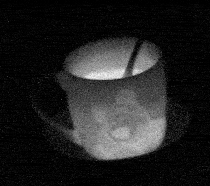 In the video, it may seem that molten, glowing uranium is being scooped with a tungsten scrap, but ... but no. And this is not the image of the thermal imager - it is the closest infrared spectral range. Perhaps you will no longer see such unique pictures that are hidden under the cat, welcome ...
In the video, it may seem that molten, glowing uranium is being scooped with a tungsten scrap, but ... but no. And this is not the image of the thermal imager - it is the closest infrared spectral range. Perhaps you will no longer see such unique pictures that are hidden under the cat, welcome ...ps: reading the title in the mobile version of the animation is not seen now, so welcome to the article right away ... your cup of freshly brewed coffee is hereinafter referred to ... =)
Conventional silicon detectors CCD and CMOS can not be used to obtain images in the spectral range with a wavelength of more than 1 micron. Quanta with a wavelength of 1 µm cannot induce electrons in silicon detectors; quantum efficiency in the near-IR range quickly drops to zero.

')
For the registration of near-infrared radiation, gallium-indium arsenide-based detectors (InGaAs) are used. Well, a few years ago, we got into the hands of a commercial detector of this type of near-infrared (SWIR, Near-infrared). The resolution of the detector is small: 320x256 elements. The spectral characteristic of the detector is shown in the figure below.

It seemed that nothing foreshadowed the difficulties, and the development of the camera on this detector should not differ from the development of the camera of the visible range, but this was not the case. The main difficulty was a very large dark current of the detector and a very large variation in the parameters of individual elements. Look at the chart below:
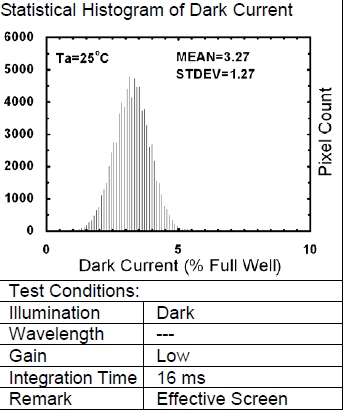
During 16ms, the potential well of individual detector elements is quickly filled at 3-5%, and for a frequency of 25 frames per second (40ms), this is already 8-12%. For the capacity of the potential well of the detector element 6 million. an electron is 600,000 electrons of the dark current of an individual element, and the noise in a single pixel is more than 800 electrons. Is it a lot or a little? It is quite normal to register illuminated objects, but for a sensitive camera, which is capable of detecting its own radiation of objects with temperatures up to 100'C (as presented in the first video) - the noise of 800 electrons is very, very much.
The graph shows the blackbody radiation, as can be seen, for objects with a temperature of 300-400K, the radiation in the range of 1-2 µm is very weak.

The second feature is a very large variation in the characteristics of each element separately. The development took several years, the emphasis was on the development of low-noise analog circuitry, as well as on the approximation of the characteristics of individual elements depending on temperature. Again, the detector is commercial, we could not cool the detector and directly reduce the level of dark current was not possible, but we were able to realize the temperature of the detector, which significantly affected the stability of the characteristics.
Earlier, we mentioned this camera in some articles and compared its work with detectors of the visible range, as well as with an electron-optical converter of the image intensifier 3+:
“ How different cameras and devices are seen at night ”
also demonstrated the capabilities of this camera in the observation mode of the stars during the day:
" Observation of the stars during the day or day astronomy "
Now we want to supplement the previously published and demonstrate other unique features of the near-infrared camera.
The most common question is “How does the camera see in the fog?”. The quality fog is quite difficult to catch, so we immediately apologize for a possibly not very revealing video. In order to demonstrate, as seen in reality by the eyes, a PanasonicGM1 visible range camera was used.

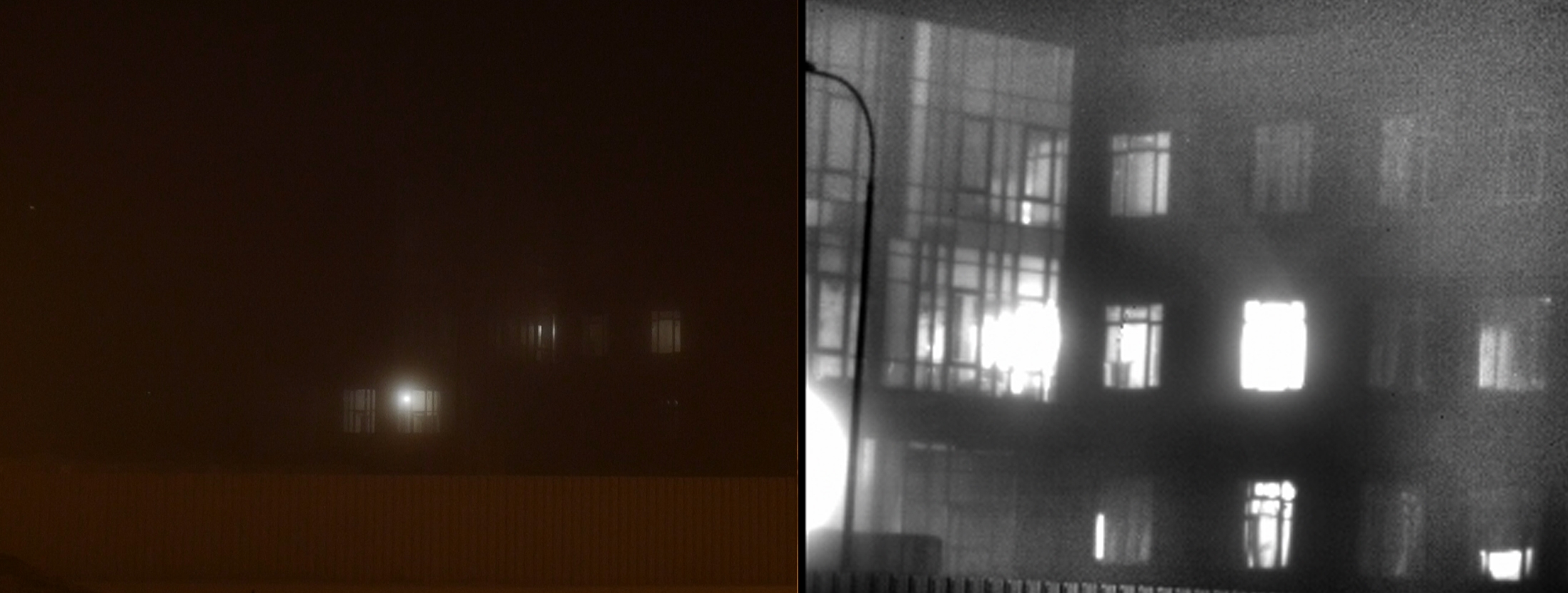
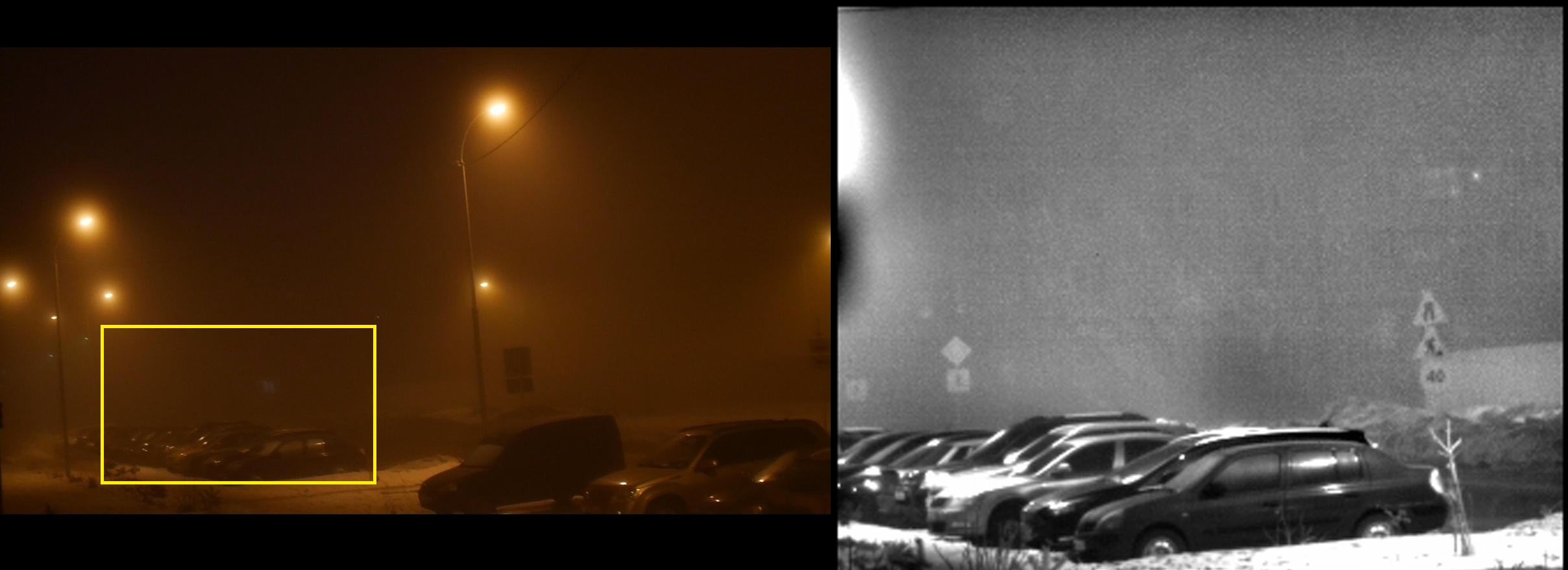
self video surveillance in the mist swir cam
original videos are available by reference.
" VS320 video source "
" PanasonicGM1 original video "
Just in case, let us warn you that fogs are very different from each other, there are fogs when nothing is visible in any spectral range. The result is highly dependent on the dispersion of water particles.
The sensitivity of the camera shows the video, a fragment of which is presented in the title of the article. This is a regular cup with delicious freshly brewed coffee. At the beginning of the video, we observe the objects' own thermal radiation, and after switching on the lighting, it is reflected. So far, the VS320 is the only camera that can display video radiation of objects up to 100'C. We have shown this video several times at exhibitions and always faced skepticism =)
For example: a color camera and an eye see a hot metal with a temperature above 500'C, a black and white CCD array sees the sting of a hot soldering iron with a temperature of 400'C, SWIR camera VS320 sees objects from 50-60'C.
More objective measurements on the blackbody model. At about 50 degrees, the noise of the detector elements and the signal from the blackbody model are compared.

the original video can be obtained here (attention! big size, as without compression)
" VS320 video black body "
From some interesting moments that we encountered while working with cameras,
This is a special protection that is applied to the banknotes, perhaps it is luminescent markers:
Images of banknotes under normal lighting does not differ from those indicated on the website of the Central Bank of Russia, for example, 500r:
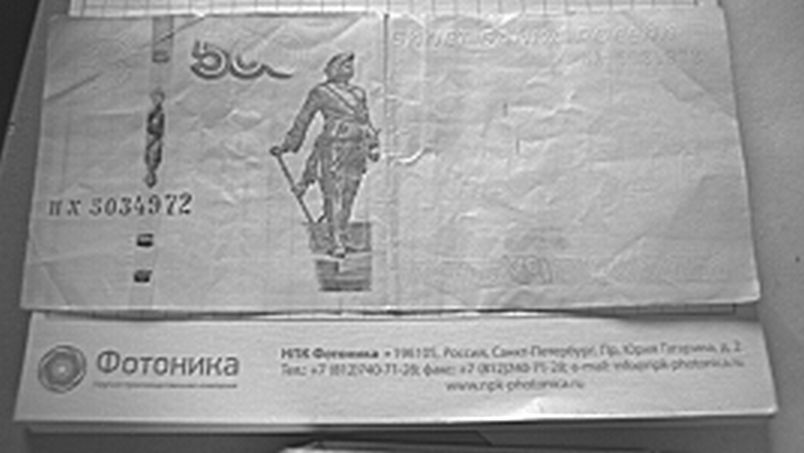
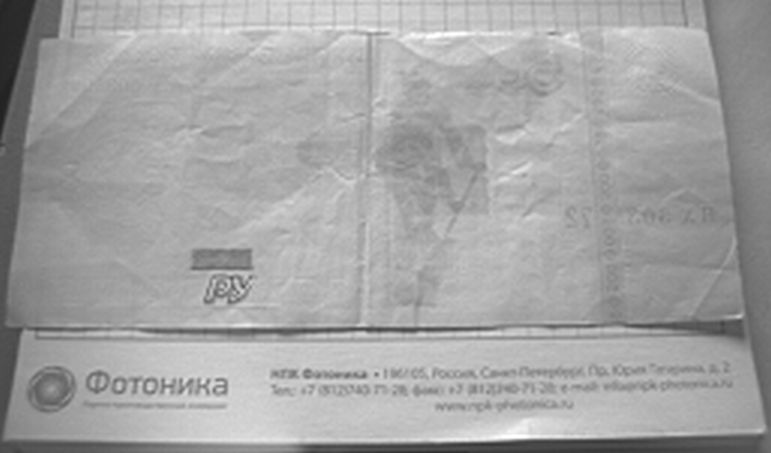
but when illuminated exclusively by the visible spectrum (fluorescent lamp), markers are observed that are located at different banknotes in different places and could be used for additional automatic sorting of banknotes:
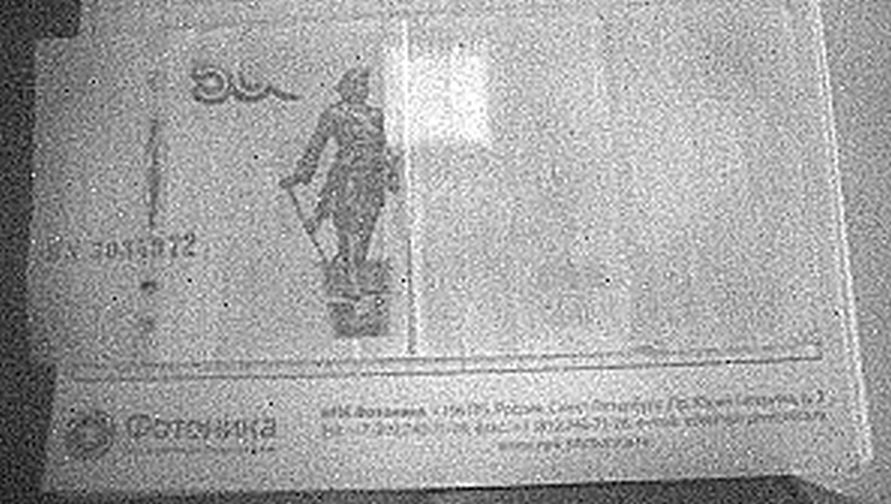
on the website of the Central Bank of the Russian Federation such protection is not indicated

In the new banknotes, apparently, they refused such marking, now the marker is in the same place, round with the letter P:

and here are all the notes together:

It should also be noted that the night sky is very bright in the near IR range. This allows the near-infrared cameras to compete with other night-vision devices, as well as for some applications such as detecting objects against the background of a “bright” night sky.
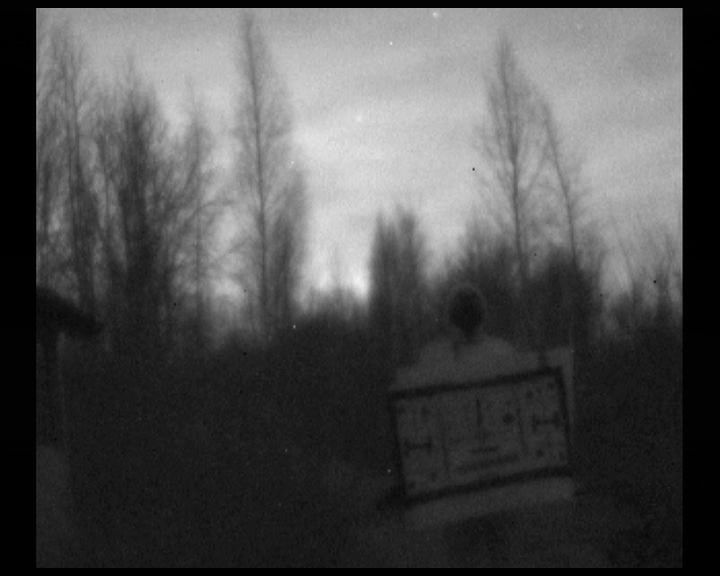
“ VS320. Night sky in the near infrared. source (200MByte) "
But in the afternoon, on the contrary, in the near IR range the sky is much darker (compared to the brightness of the sky in the visible part of the spectrum), for example, the frame is on a very bright sunny day.
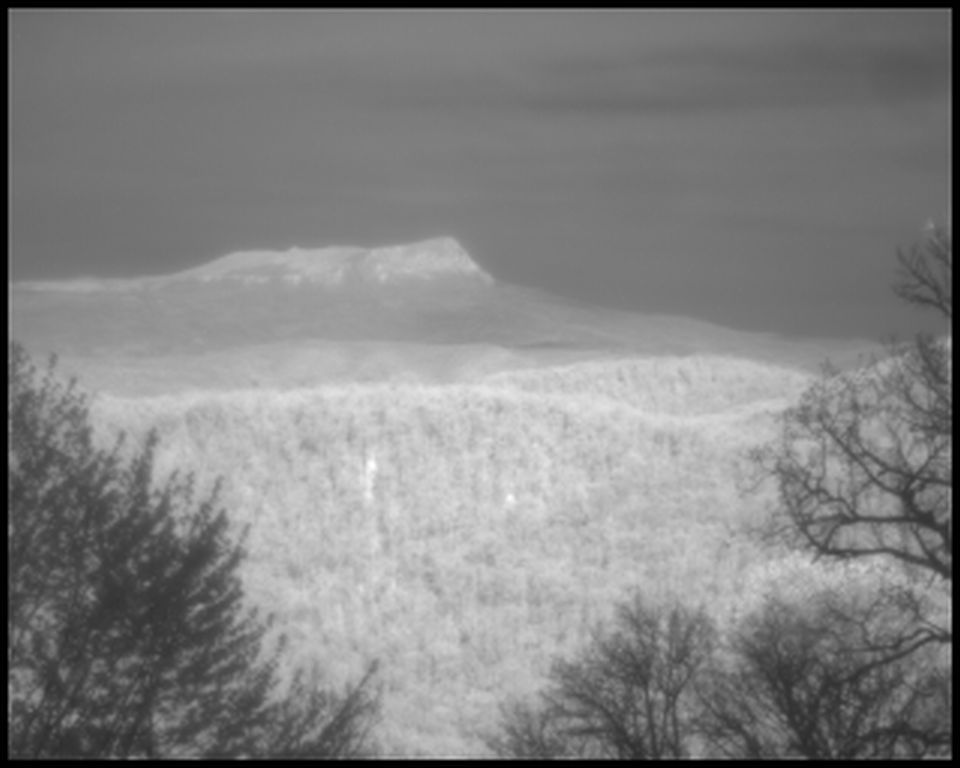
This property can be used to observe celestial objects during the day, a special case of which was described in the article: “ Observation of stars by day or day astronomy ”.
The most important property of a near-infrared camera (along with the possibility of improving visibility in the fog) is significantly better visibility in the haze, for comparing frames of different parts of the spectrum:

But the video in the near IR range cable-stayed bridge at a distance of 9-10km.
and here is a demonstration at a distance of 9 km along the Smolny (in the middle of the video, the camera function is turned on: local contrasting (analogue of HDR / DDE))

You can still talk quite a lot about the near-infrared range, but, unfortunately, this is beyond the scope of one article. If it turns out and there will be enough material, we will definitely continue. Summing up we can say that the camera near the infrared can be used:
- to improve visibility in fog
- to improve visibility at atmospheric haze, smog
- as night vision devices (improving visibility at night)
- searching for objects in the day sky
- when developing multispectral cameras, when it is important to see significantly warm
hidden object
- for special industrial applications when this spectral range is important
- search for masked items, when some colors become low-contrast, while others, on the contrary, darken in this range or luminesce.
I would like to say thank you to the organization Photonica, which provided this detector for development and financed the work for a long time. The result of the work was a camera with very high sensitivity characteristics. Special thanks to the colleagues who developed it, reworked it several times, and also built a mathematical model and developed a calibration method for such an obstinate InGaAs detector.
Well, actually the photo of the VS320 camera "in size":

We are waiting for questions in the comments, we will be happy to answer.
Source: https://habr.com/ru/post/428778/
All Articles